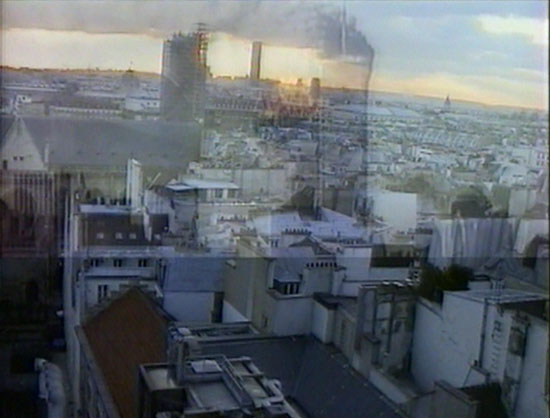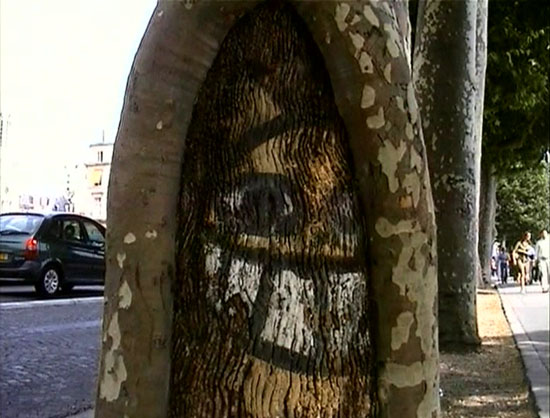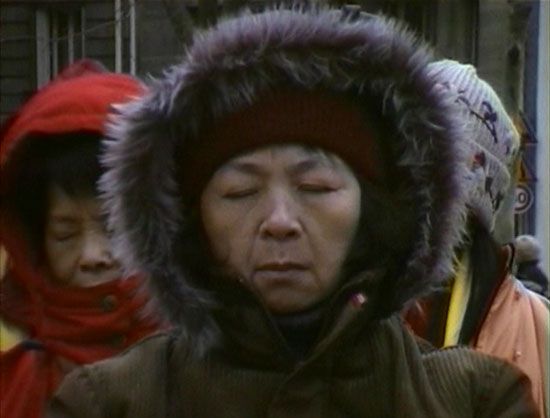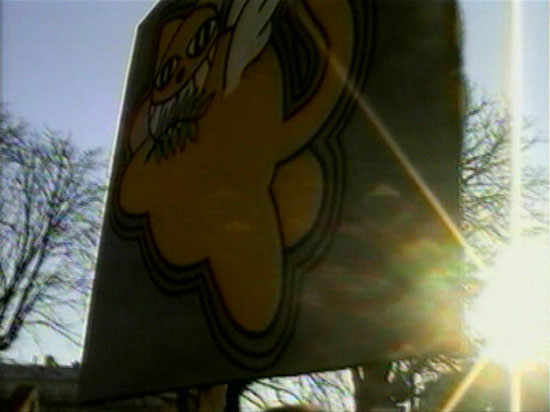ExtaZus (2019, Bertrand Mandico)
1. The sword-wielding, red-haired Nirvana Queen, tastes a crystalline rock in front of the orally-attached twins, awakens in a green world surrounded by crystal-headed hook-handed persons, talks to a woman in a bubble with a strong French accent, gets aggressively tongued by a giant cave-mouth, then she disfigures the titular sunglasses-man who’d been typing her story with his Freddy Krueger fingers.

2. She convinces him to create a new heroine named Peach Machine, and he has her dance with death in the desert. Peach is unhappy with her role, and slaps his face off.

3. With the author dead, PM visits NQ. As NQ plays a dual-dicked statue like it’s a Robotron machine, PM approaches and makes out with the face on the back of NQ’s head.

–
Veslemøy’s Song (2018, Sofia Bohdanowicz)
The Deragh Campbell-as-Audrey short coming between Never Eat Alone and MS Slavic 7. It’s more lively than the previous feature, which is a good sign for the next one. She finds a book about her grandfather’s violin teacher Kathleen Parlow, who played lead on a music piece titled V’s Song that was written for her when she was 18. Audrey flies to NYC to hear the only known recording of this piece, but can only hear part of the record, since the archive will only play excerpts and will not make copies. Not a documentary, of course, despite the real people and events, since we hear the song in the film. Hand-processed film, full of texture and scratches.

–
The Sky Is Clear And Blue Today (2019, Ricky D’Ambrose)
German lesson repeating the film title… kids recite My Pet Goat to camera… scraps and stories from post-9/11 America. The story proper is about an American director named Helmar contracted by German TV to make a cheap 60-minute film about a photograph showing a happy get-together while the twin towers burned in the background. They cast lookalikes from the photo and resort to digital trickery to fake the location, after the real location owner (Glenn Kenny, introduced as “an especially unpleasant and gluttonous man”) refuses to let them shoot. But the director and eight others die in a fire during production – “it was just like a movie” said the survivors. Fits in nicely with my previous short, stylistically and in its blend of real events with fictional ones, matter-of-factly narrated.

–
Visit (2020, Jia Zhangke)
Oh noooo, a beautiful short about covid quarantine. I was still getting angry over The Plagiarists and wasn’t ready for anything this delicate and lovely. Add it to the list of movies that show off their directors’ DVD collections: shout out to Suzhou River.

–
Fire (Pozar) (2020, David Lynch)
Abstract animation solidifies into shapes: a house, a tree, fire. Still images, but the drawn page shakes under the camera. Nice string music with surface noise (added?). Through a burned hole floats a flying creature with hands reaching from its eye sockets. A welcome callback to the very early Lynch shorts blended with the Inland Empire-era web works.

–
France Against the Robots (2020, Jean-Marie Straub)
Single shot, a man walks along the lake and talks about the sad necessity of revolution, since the capitalist systems aren’t gonna reform themselves. Then the credits repeat, and the film repeats – but at a different time of day, and with more swans about.
–
Pigeons and Architecture (2020, Anne Linke)
A chill movie looking at how pigeons live in buildings, and how people who love pigeons illicitly feed them by shawshanking healthy grains down their pantlegs, something I will be doing wherever I go from now on.












